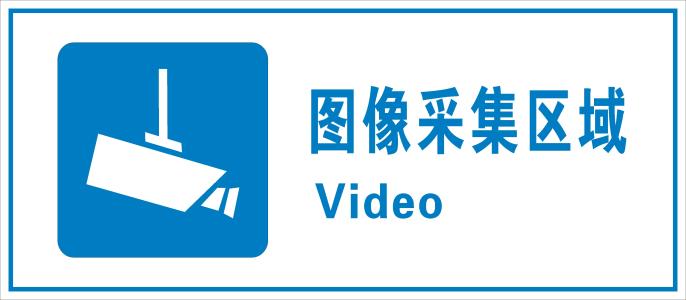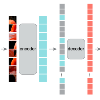Dietary assessment is essential to maintaining a healthy lifestyle. Automatic image-based dietary assessment is a growing field of research due to the increasing prevalence of image capturing devices (e.g. mobile phones). In this work, we estimate food energy from a single monocular image, a difficult task due to the limited hard-to-extract amount of energy information present in an image. To do so, we employ an improved encoder-decoder framework for energy estimation; the encoder transforms the image into a representation embedded with food energy information in an easier-to-extract format, which the decoder then extracts the energy information from. To implement our method, we compile a high-quality food image dataset verified by registered dietitians containing eating scene images, food-item segmentation masks, and ground truth calorie values. Our method improves upon previous caloric estimation methods by over 10\% and 30 kCal in terms of MAPE and MAE respectively.
相關內容
Online marketplaces use rating systems to promote the discovery of high-quality products. However, these systems also lead to high variance in producers' economic outcomes: a new producer who sells high-quality items, may unluckily receive one low rating early on, negatively impacting their future popularity. We investigate the design of rating systems that balance the goals of identifying high-quality products (efficiency) and minimizing the variance in economic outcomes of producers of similar quality (individual producer fairness). We show that there is a trade-off between these two goals: rating systems that promote efficiency are necessarily less individually fair to producers. We introduce prior-weighted rating systems as an approach to managing this trade-off. Informally, the system we propose sets a system-wide prior for the quality of an incoming product; subsequently, the system updates that prior to a posterior for each producer's quality based on user-generated ratings over time. We show theoretically that in markets where products accrue reviews at an equal rate, the strength of the rating system's prior determines the operating point on the identified trade-off: the stronger the prior, the more the marketplace discounts early ratings data (increasing individual fairness), but the slower the platform is in learning about true item quality (so efficiency suffers). We further analyze this trade-off in a responsive market where customers make decisions based on historical ratings. Through calibrated simulations, we show that the choice of prior strength mediates the same efficiency-consistency trade-off in this setting. Overall, we demonstrate that by tuning the prior as a design choice in a prior-weighted rating system, platforms can be intentional about the balance between efficiency and producer fairness.
Recently, multi-agent collaborative (MAC) perception has been proposed and outperformed the traditional single-agent perception in many applications, such as autonomous driving. However, MAC perception is more vulnerable to adversarial attacks than single-agent perception due to the information exchange. The attacker can easily degrade the performance of a victim agent by sending harmful information from a malicious agent nearby. In this paper, we extend adversarial attacks to an important perception task -- MAC object detection, where generic defenses such as adversarial training are no longer effective against these attacks. More importantly, we propose Malicious Agent Detection (MADE), a reactive defense specific to MAC perception that can be deployed by each agent to accurately detect and then remove any potential malicious agent in its local collaboration network. In particular, MADE inspects each agent in the network independently using a semi-supervised anomaly detector based on a double-hypothesis test with the Benjamini-Hochberg procedure to control the false positive rate of the inference. For the two hypothesis tests, we propose a match loss statistic and a collaborative reconstruction loss statistic, respectively, both based on the consistency between the agent to be inspected and the ego agent where our detector is deployed. We conduct comprehensive evaluations on a benchmark 3D dataset V2X-sim and a real-road dataset DAIR-V2X and show that with the protection of MADE, the drops in the average precision compared with the best-case "oracle" defender against our attack are merely 1.28% and 0.34%, respectively, much lower than 8.92% and 10.00% for adversarial training, respectively.
Volume-wise labeling in 3D medical images is a time-consuming task that requires expertise. As a result, there is growing interest in using semi-supervised learning (SSL) techniques to train models with limited labeled data. However, the challenges and practical applications extend beyond SSL to settings such as unsupervised domain adaptation (UDA) and semi-supervised domain generalization (SemiDG). This work aims to develop a generic SSL framework that can handle all three settings. We identify two main obstacles to achieving this goal in the existing SSL framework: 1) the weakness of capturing distribution-invariant features; and 2) the tendency for unlabeled data to be overwhelmed by labeled data, leading to over-fitting to the labeled data during training. To address these issues, we propose an Aggregating & Decoupling framework. The aggregating part consists of a Diffusion encoder that constructs a common knowledge set by extracting distribution-invariant features from aggregated information from multiple distributions/domains. The decoupling part consists of three decoders that decouple the training process with labeled and unlabeled data, thus avoiding over-fitting to labeled data, specific domains and classes. We evaluate our proposed framework on four benchmark datasets for SSL, Class-imbalanced SSL, UDA and SemiDG. The results showcase notable improvements compared to state-of-the-art methods across all four settings, indicating the potential of our framework to tackle more challenging SSL scenarios. Code and models are available at: //github.com/xmed-lab/GenericSSL.
The impressive success of recent deep neural network (DNN)-based systems is significantly influenced by the high-quality datasets used in training. However, the effects of the datasets, especially how they interact with each other, remain underexplored. We propose a state-vector framework to enable rigorous studies in this direction. This framework uses idealized probing test results as the bases of a vector space. This framework allows us to quantify the effects of both standalone and interacting datasets. We show that the significant effects of some commonly-used language understanding datasets are characteristic and are concentrated on a few linguistic dimensions. Additionally, we observe some ``spill-over'' effects: the datasets could impact the models along dimensions that may seem unrelated to the intended tasks. Our state-vector framework paves the way for a systematic understanding of the dataset effects, a crucial component in responsible and robust model development.

The development of autonomous agents which can interact with other agents to accomplish a given task is a core area of research in artificial intelligence and machine learning. Towards this goal, the Autonomous Agents Research Group develops novel machine learning algorithms for autonomous systems control, with a specific focus on deep reinforcement learning and multi-agent reinforcement learning. Research problems include scalable learning of coordinated agent policies and inter-agent communication; reasoning about the behaviours, goals, and composition of other agents from limited observations; and sample-efficient learning based on intrinsic motivation, curriculum learning, causal inference, and representation learning. This article provides a broad overview of the ongoing research portfolio of the group and discusses open problems for future directions.
With the rise of powerful pre-trained vision-language models like CLIP, it becomes essential to investigate ways to adapt these models to downstream datasets. A recently proposed method named Context Optimization (CoOp) introduces the concept of prompt learning -- a recent trend in NLP -- to the vision domain for adapting pre-trained vision-language models. Specifically, CoOp turns context words in a prompt into a set of learnable vectors and, with only a few labeled images for learning, can achieve huge improvements over intensively-tuned manual prompts. In our study we identify a critical problem of CoOp: the learned context is not generalizable to wider unseen classes within the same dataset, suggesting that CoOp overfits base classes observed during training. To address the problem, we propose Conditional Context Optimization (CoCoOp), which extends CoOp by further learning a lightweight neural network to generate for each image an input-conditional token (vector). Compared to CoOp's static prompts, our dynamic prompts adapt to each instance and are thus less sensitive to class shift. Extensive experiments show that CoCoOp generalizes much better than CoOp to unseen classes, even showing promising transferability beyond a single dataset; and yields stronger domain generalization performance as well. Code is available at //github.com/KaiyangZhou/CoOp.
Recent advances in maximizing mutual information (MI) between the source and target have demonstrated its effectiveness in text generation. However, previous works paid little attention to modeling the backward network of MI (i.e., dependency from the target to the source), which is crucial to the tightness of the variational information maximization lower bound. In this paper, we propose Adversarial Mutual Information (AMI): a text generation framework which is formed as a novel saddle point (min-max) optimization aiming to identify joint interactions between the source and target. Within this framework, the forward and backward networks are able to iteratively promote or demote each other's generated instances by comparing the real and synthetic data distributions. We also develop a latent noise sampling strategy that leverages random variations at the high-level semantic space to enhance the long term dependency in the generation process. Extensive experiments based on different text generation tasks demonstrate that the proposed AMI framework can significantly outperform several strong baselines, and we also show that AMI has potential to lead to a tighter lower bound of maximum mutual information for the variational information maximization problem.
External knowledge is often useful for natural language understanding tasks. We introduce a contextual text representation model called Conceptual-Contextual (CC) embeddings, which incorporates structured knowledge into text representations. Unlike entity embedding methods, our approach encodes a knowledge graph into a context model. CC embeddings can be easily reused for a wide range of tasks just like pre-trained language models. Our model effectively encodes the huge UMLS database by leveraging semantic generalizability. Experiments on electronic health records (EHRs) and medical text processing benchmarks showed our model gives a major boost to the performance of supervised medical NLP tasks.
Embedding entities and relations into a continuous multi-dimensional vector space have become the dominant method for knowledge graph embedding in representation learning. However, most existing models ignore to represent hierarchical knowledge, such as the similarities and dissimilarities of entities in one domain. We proposed to learn a Domain Representations over existing knowledge graph embedding models, such that entities that have similar attributes are organized into the same domain. Such hierarchical knowledge of domains can give further evidence in link prediction. Experimental results show that domain embeddings give a significant improvement over the most recent state-of-art baseline knowledge graph embedding models.
External knowledge is often useful for natural language understanding tasks. We introduce a contextual text representation model called Conceptual-Contextual (CC) embeddings, which incorporates structured knowledge into text representations. Unlike entity embedding methods, our approach encodes a knowledge graph into a context model. CC embeddings can be easily reused for a wide range of tasks just like pre-trained language models. Our model effectively encodes the huge UMLS database by leveraging semantic generalizability. Experiments on electronic health records (EHRs) and medical text processing benchmarks showed our model gives a major boost to the performance of supervised medical NLP tasks.



